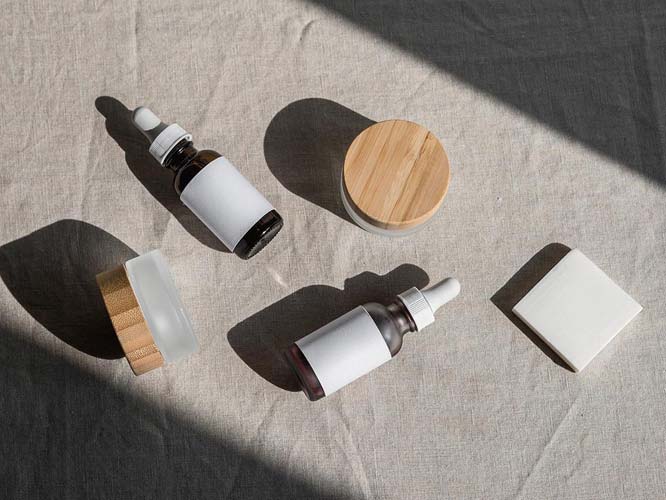
14 Jan Bottle Packaging: Plastic or Glass, Which One is Better?
Dive into the bottle packaging debate: plastic vs. glass. Understand the pros and cons of each material in terms of sustainability, cost, and appeal.
The choice between plastic and glass for bottle packaging is a topic of ongoing debate among manufacturers, marketers, and environmentally conscious consumers. This blog post takes a closer look at this crucial decision, weighing the pros and cons of each material. Plastic, known for its versatility and cost-effectiveness, has dominated the packaging industry for decades. Yet, its environmental impact is leading many to reconsider. On the other hand, glass packaging, with its premium feel and recyclability, brings an aura of quality and sustainability.
We examine various factors from durability, product safety, and consumer perception to environmental implications. This comparison goes beyond mere material choice; it’s about aligning your packaging with your brand values and market demands. Whether you’re in the food and beverage industry, cosmetics, or pharmaceuticals, understanding the nuances of bottle packaging can significantly impact your product’s success. Join us as we explore the intricate details of plastic and glass packaging, helping you make an informed decision for your business.
The Great Debate: Plastic vs. Glass in Bottle Packaging
The debate between plastic and glass has been long-standing and multi-faceted. Each material has its unique advantages and drawbacks, making the choice far from straightforward. This dilemma isn’t just a matter of personal preference or cost – it involves considerations of sustainability, product compatibility, consumer safety, and market trends. In this comprehensive analysis, we will delve deep into the characteristics of both materials to understand which reigns supreme in the world of bottle packaging.
Plastic Packaging: Lightweight and Cost-Effective
Plastic, known for its versatility and practicality, is a popular choice in various industries, from beverages to pharmaceuticals. Its lightweight nature makes it a cost-effective option, reducing transportation costs and making it convenient for consumers to carry. Plastic is also highly customizable – it can be molded into numerous shapes and sizes, catering to specific branding needs. The advancement in polymer technology has further enhanced its durability and safety, making it suitable for a wide range of products. However, the environmental impact of plastic cannot be overlooked. Although recycling efforts are increasing, the biodegradability of plastic remains a significant concern, contributing to growing environmental pollution.
Glass Packaging: Premium Feel and Sustainability
Glass, on the other hand, is often associated with a premium look and feel, making it a popular choice for high-end products. Its inert nature ensures that it does not react with the contents, maintaining the product’s integrity and flavor. Glass is also 100% recyclable, which significantly reduces its environmental impact. The sustainability factor of glass makes it a favorable option among environmentally conscious consumers. However, glass’s fragility and weight add to transportation costs and the risk of breakage. These factors can increase the overall cost of products, making them less competitive in price-sensitive markets.
Considering Product Compatibility and Consumer Preferences
The choice between plastic and glass also hinges on product compatibility. Certain products, especially in the food and beverage industry, may have specific storage requirements that one material caters to better than the other. For instance, glass is often preferred for alcoholic beverages and acidic products, as it preserves the flavor and prevents chemical reactions. Consumer preferences also play a critical role in this decision. In some markets, consumers may prefer glass for its perceived quality and eco-friendliness, while in others, the convenience and safety of plastic might be more appealing.
Innovation and Future Trends in Bottle Packaging
The future of bottle packaging is likely to be shaped by innovations aimed at mitigating the drawbacks of both materials. Biodegradable plastics and improved recycling processes are making plastic a more sustainable option. Meanwhile, advancements in glass manufacturing are leading to lighter, more durable glass bottles. The development of new materials that combine the best attributes of plastic and glass could also emerge as a game-changing solution. Additionally, consumer trends towards sustainability and product safety will continue to influence the choice of packaging material.
Deciding between plastic and glass for bottle packaging is a complex decision that depends on various factors, including cost, sustainability, product compatibility, and consumer preferences. Both materials have their strengths and weaknesses, and the choice often comes down to what best suits the product and aligns with the brand’s values and market demands. As technology advances and consumer awareness grows, the packaging industry will continue to evolve, potentially leading to new materials and methods that bridge the gap between plastic and glass. For now, the debate continues, with both materials holding their ground in the competitive world of bottle packaging.



Sorry, the comment form is closed at this time.